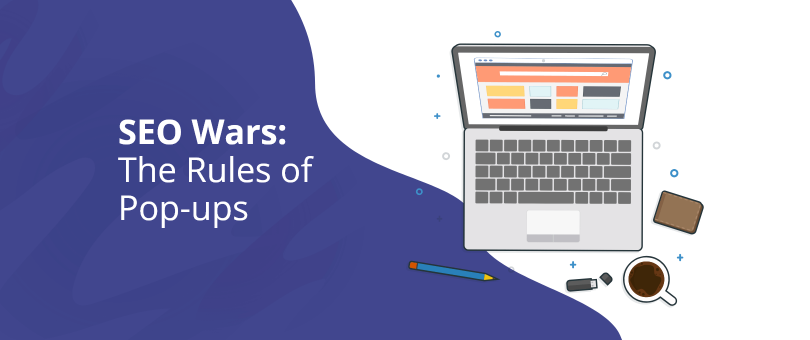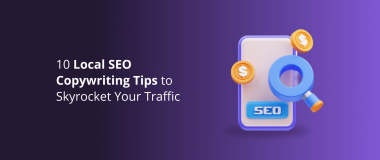Pop-ups are used by almost every website nowadays. They could be quite powerful for lead generation as interstitials are able to grab the viewer’s attention and aim it in the direction that best serves your brand – focusing on your value proposition or campaign.
Furthermore, practical business cases have shown that implementing a pop-up strategy immediately boosts email list opt-ins. According to Sumo, the average conversion rate for a high-performing interstitial is 9.28 percent.
Google Policies VS the Intrusive Interstitials
All of these facts and statistics suggest that pop-ups are a great way to generate leads by focusing attention on the most relevant marketing messages. Yet, in recent years, Google Policies is focusing more and more on meetings users’ intent, displaying pages that offer better UX (user experience), are higher in SERPs, and deliver personalized content.
In the case that your interstitials appear spammy or devalue the users’ experience being hard to dismiss or hiding a large part of your content, your page may be devalued by the search engine. As the most commonly used types of pop-ups are considered “intrusive”, implementing this marketing technique could significantly harm your page’s ranking in SERPs.
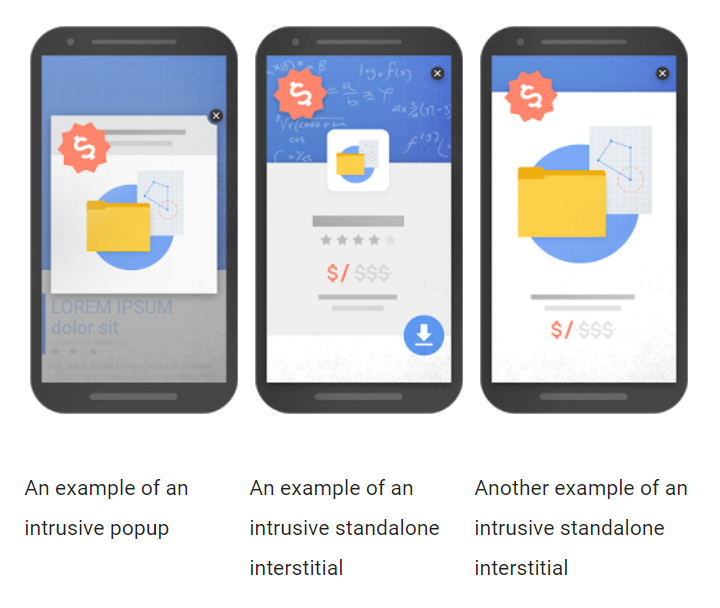
The Interstitials that Google Dislikes:
- Content-covering pop-ups that users need to dismiss to continue exploring the page
- Standalone pop-ups that require users to close them before accessing your content.
- Deceptive page layouts that have sections that look like interstitials.
- Interstitials that unexpectedly launch as soon as a user clicks on your page.
- Overlay modals that are difficult to close and/or easily redirect visitors who accidentally click on them.
In the World of Non-Intrusive Pop-Ups
“Interstitial” is a broad term that can refer to most pop-ups, modals, and overlays, but not all interstitials are equally intrusive as some of them are designed to fit the users’ journey. These could help you achieve great results such as the 9.28 percentage conversion rate mentioned above. And without risking your ranking in SERPs and your leads coming from direct searches.
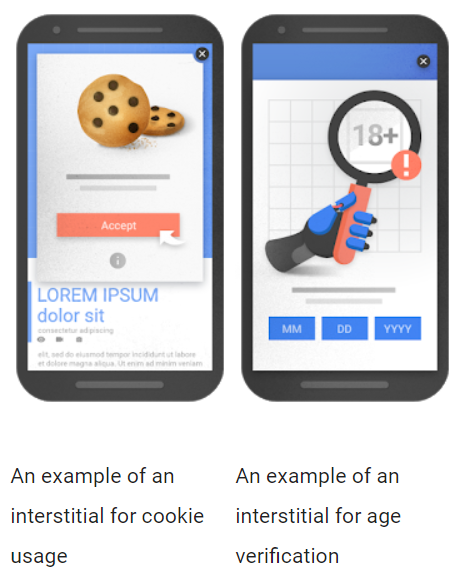
Anything you’re legally bound to display to provide users with information or to restrict their access to particular content (personalize the experience) is not penalized by Google, as covered in the Google’s Webmaster Central Blog.
Examples for such pop-ups are notifications for cookie usage and age verification interstitials. Keep in mind though, that the language-selection pop-ups of web pages with international audiences are not considered as non-intrusive or something you’re required to display. Google views these as diminishing the user experience and thus, such interstitials will most likely harm your SERP ranking.
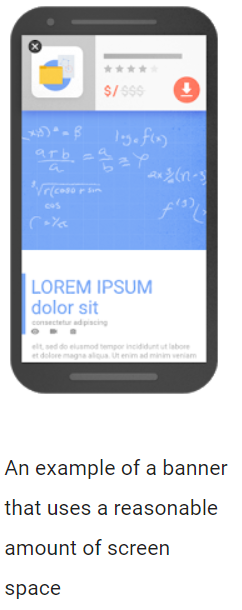
Other interstitials that are not considered intrusive are the ones that take up to 15 percent of the screen, such as banner ads and slide-ins. Due to the fact that they allow the user to browse your website without closing them, such pop-ups are ideal especially if you are looking to increase the engagement of mobile users.
You won’t be able to always know whether a pop-up is intrusive or not. As a general rule, refrain from interstitials that cover the full screen. Always keep the user journey and UX in mind. Use interstitials that do not block the reader from viewing your page’s content, contributing to a smoother UX.
Timed Pop-Ups – the Way Around
Full-screen pop-ups and overlays are ideal for a campaign gathering newsletter subscribers or to announce a new product launch or an event because they capture users’ attention. This is why sometimes interstitials that cover the whole screen are a necessary part of your content strategy. If you have to use such pop-ups, it’s vital to make them more compliant with Google’s ranking policies and users’ requirements.
Google is only penalizing pages that display interstitials right after users access them from a search. This policy opens a gap that marketers can leverage. Timing your pop-ups is a way around the search engine’s policy of devaluing pages with intrusive interstitials.
Exit-Intent Pop-Ups
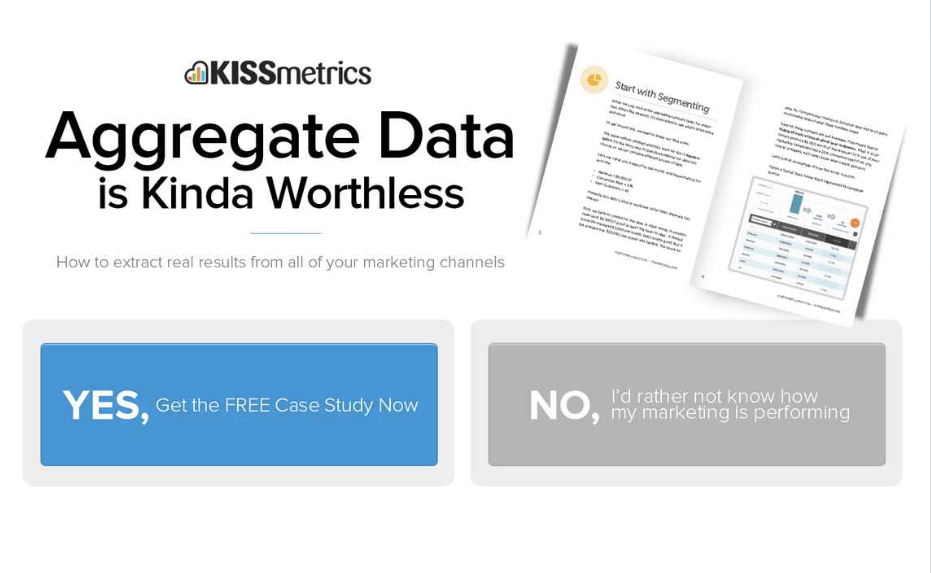
An exit-intent pop-up by Kissmetrics
Pop-ups triggered by exit intent are becoming used more and more widely. Such interstitials correspond well with the user’s journey and can be quite powerful for lead generation as you’re personalizing your content based on users’ behavior, giving you the ability to make your marketing message more relevant.
If you’re implementing exit-triggered interstitials, make sure they’re not too “sensitive” being triggered every time the user involuntarily moves their mouse towards the URL bar. Most tools for pop-ups like OptinMonster offer different levels of sensitivity, for custom interstitials, this could also be controlled via the code. We recommend checking the sensitivity non-manually by using a user recording tool such as Hotjar or Inspectlet.
Another useful type of pop-ups you can use are the interstitials that automatically close after a certain period. As viewable in the Webmaster Central Blog, they’re also viewed by search engines as non-disruptive for the user experience.
Another workaround is to use delayed pop-ups that are triggered sometime after the user lands on your page. We’re strongly advising keeping to the recommended practices of using interstitials listed in this article.
As a whole, timed pop-ups are not an individual promotional campaign but rather part of the whole content strategy. They’re only as effective as your content because they require engagement from the users to be displayed.
Interstitials Based on User Behavior
Interstitials that are triggered by certain user behaviors are also aligned with the viewer’s intent and are considered non-disruptive for the user experience. Effective pop-ups that you can use include:
- 50% scroll pop-ups and sliders – They’re shown to the reader when they´ve already scrolled through 50% of the page. Such behavior shows that the readers are interested in the page’s content. It’s advisable to use interstitials that are directly connected to the topic of the page such as a blog subscription pop-up in an article.
- Page-visit precondition pop-ups – Such interstitials appear only when a user has visited a certain page before or has visited a fixed number of pages on the site. These pop-ups are most useful when converting already engaged leads, or mark them as sales-qualified ones based on their activity with the pop-ups. A good example would be an interstitial that gives users the ability to download the company’s whitepaper after the user has visited 5 pages on the site demonstrating interest towards the brand.
- Preconditional interstitials – Other preconditional interstitials that are non-disruptive include pop-ups that appear only to users that have filled in/or not filled in a form on the site, and are displayed based on whether the user is logged in or not, their buying history, or whether they’re a new or a returning visitor.
Tricking the Algorithm and Making It Your Friend
What’s important to understand is that Google devalues only interstitials that appear when moving from a SERP to a site page, your Organic Search Visits. This is why another smart way to generate leads through interstitials is to use page-to-page pop-ups.
As mentioned before, Google values good UX, and smart internal linking is part of providing a great user experience. This is why it’s also important to match page-to-page interstitials with users intent.
We’ve already discussed that pop-ups covering more than 15% of the screen, in general, are considered intrusive. Though, 15% of a desktop screen is quite much more than 15% of a mobile screen. All of these practices are a way to trick the algorithm so to say.
They’re temporary solutions at best as Google is known for constantly updating their policies to fit users needs. It’s better to find a user-friendly solution that follows the white-hat SEO practices instead of trying to merely trick the search engine.
Be Careful: The Risky Interstitials

Live chat by Intercom
Even though we’ve mentioned all interstitials that are officially considered as intrusive by Google, there’re still some useful pop-ups that are widely regarded as non-intrusive yet might be penalized if they’re found to be disruptive to the user experience.
If you’re using one of the following elements, we advise you to carefully monitor your site’s performance to know if some of them might be affecting your SERP ranking:
- Language-selection pop-ups – The best practice is to include a button on your website from where users can change the language if necessary and not use pop-ups for this process.
- Sticky sidebars – Use an elegant design that corresponds with the overall design of your website. Do not make them too big because this can hide content and disrupt the user experience.
- Share Buttons – Do not make them larger than other similar elements on the site to keep them non-intrusive.
- Live Chat Boxes– Abstain from using large windows that cover more than 15-20% of the screen.
Summary
Interstitials are an essential part of many content strategies. If used correctly they’re a great lead-generator and can help you increase your newsletter subscribers, present a product launch, or promote your core marketing initiatives.
Yet, some pop-ups are disruptive to the user experience as they hide a significant percentage of the content you’re displaying on your web page and act as a barrier that users must go through in order to see the information they require.
Google penalizes such actions simply because Google cares about UX. This is why, we, as marketers, must always keep up to date with the latest policies of search engines and the effectiveness of practices used by competitors. Still, if user experience and being helpful is always top of mind, you would be in line with policies, old or new to come.
